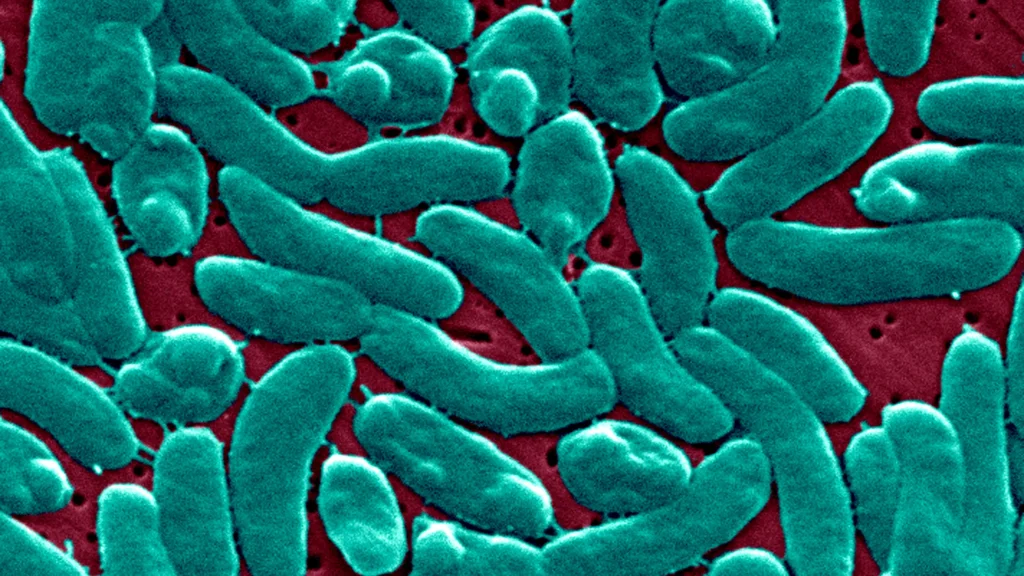A rare but deadly infection caused by flesh-eating bacteria has claimed the lives of four people in Florida, sparking health alerts and public concern. State health officials have confirmed that cases of necrotizing fasciitis, the medical term for this dangerous condition, are increasing due to warm waters and summer activities.
In this article, we’ll explore what flesh-eating bacteria is, how it spreads, who is most at risk, and what steps you can take to stay safe.
What Is Flesh-Eating Bacteria?
Flesh-eating bacteria, or necrotizing fasciitis, is a severe bacterial infection that destroys skin, fat, and tissue covering the muscles. Though the term may sound like science fiction, the bacteria behind it are very real—and deadly when not treated quickly.
Common Types of Flesh-Eating Bacteria:
- Vibrio vulnificus: Found in warm coastal waters, especially in the Gulf of Mexico.
- Group A Streptococcus: Also responsible for strep throat.
- Aeromonas hydrophila: Found in freshwater environments.
- Clostridium species: Usually associated with wounds and deep tissue.
Among these, Vibrio vulnificus has been highlighted in the recent Florida cases.
What Happened in Florida?
According to the Florida Department of Health, four deaths have occurred in recent weeks due to Vibrio vulnificus, a species of flesh-eating bacteria found in warm seawater. The bacteria can enter the body through:
- Open wounds
- Cuts or scrapes
- Ingestion of raw or undercooked seafood (especially oysters)
These recent deaths happened in different coastal counties, with each victim having a known open wound or compromised immune system.
Why Florida?
Florida’s coastal environment is a perfect breeding ground for bacteria like Vibrio vulnificus, especially in the summer months when water temperatures are high. According to the CDC, the ideal temperature range for Vibrio growth is between 68°F and 95°F (20°C – 35°C).
Risk Factors That Make Florida Vulnerable:
- Warm coastal waters
- High seafood consumption
- Tourist activities (swimming, boating, fishing)
- Hurricane season runoff that alters salinity levels
Increased awareness is now being pushed by health officials to prevent further deaths.
How Does Flesh-Eating Bacteria Spread?
While it’s not contagious like a cold or the flu, flesh-eating bacteria can infect a person through direct exposure. Here’s how it typically enters the body:
Primary Routes of Infection:
- Through open wounds: Cuts, insect bites, surgical incisions.
- Contact with contaminated seawater.
- Eating raw or undercooked shellfish.
- Improper wound care after aquatic activities.
Once inside, the bacteria rapidly destroy soft tissue and spread through the bloodstream, often leading to organ failure, amputation, or death if not treated urgently.
Early Warning Signs and Symptoms
Catching the infection early is crucial for survival. According to the CDC, symptoms can appear within a few hours to a few days.
Early Symptoms:
- Sudden, severe pain in the affected area
- Redness or swelling near a wound
- Skin discoloration
- Fever and chills
- Fatigue or dizziness
Advanced Symptoms:
- Blisters or black spots
- Pus or fluid discharge
- Rapid heartbeat
- Low blood pressure
- Confusion or unconsciousness
If you or someone you know experiences these symptoms after swimming or eating seafood, seek emergency medical attention immediately.
Who Is Most at Risk?

While anyone can technically get infected, some groups are at much higher risk.
High-Risk Groups:
- People with weakened immune systems
- Diabetics
- Those with chronic liver disease
- Cancer patients
- Elderly individuals
- People with open wounds or surgical sites
- Individuals taking immunosuppressive medication
Florida’s Health Department recommends that at-risk individuals avoid brackish water or cover any open wounds when engaging in water activities.
Treatment Options
Prompt treatment is essential. The faster the bacteria are stopped, the better the chance of survival.
Medical Treatments Include:
- Intravenous antibiotics (broad-spectrum)
- Surgical removal of infected tissue
- Amputation in severe cases
- Supportive care for organs (if affected)
In some cases, hyperbaric oxygen therapy is used to reduce the spread of infection, but it’s not widely available.
How to Stay Safe
Health experts stress that prevention is key when it comes to flesh-eating bacteria, especially in high-risk areas like Florida.
Safety Tips:
- Avoid swimming with open wounds or recent surgeries.
- Cover cuts or scrapes with waterproof bandages before entering any natural water body.
- Shower immediately after swimming in lakes or the ocean.
- Avoid raw oysters and other uncooked shellfish.
- Wear protective footwear when walking in shallow waters or on beaches.
- Clean all wounds thoroughly and monitor them for signs of infection.
If you have a chronic illness, consult your doctor before engaging in outdoor water activities.
What Health Officials Are Saying
Dr. Paul Peterson from the Florida Department of Health commented,
“This is not a widespread threat, but the consequences are severe for those affected. People need to take personal responsibility and be cautious—especially those with underlying conditions.”
The department is currently distributing educational materials at beaches, tourist centers, and hospitals. They also launched a digital awareness campaign targeting summer travelers and locals alike.
Is It Safe to Swim in Florida?
Yes—but with caution. While flesh-eating bacteria in Florida is a serious concern, it doesn’t mean you need to cancel your beach trip. The ocean is vast, and the bacteria are not present everywhere. By taking proper precautions, the risk of infection can be greatly reduced.
Final Thoughts
The recent deaths in Florida from flesh-eating bacteria are tragic and concerning. But they also highlight the importance of awareness, prevention, and early treatment. As climate change continues to affect water temperatures and sea levels, we may see more such cases in the future—not just in Florida, but around the world.
Read Next – Man Dies in MRI Machine Death Accident Involving Metal Necklace






